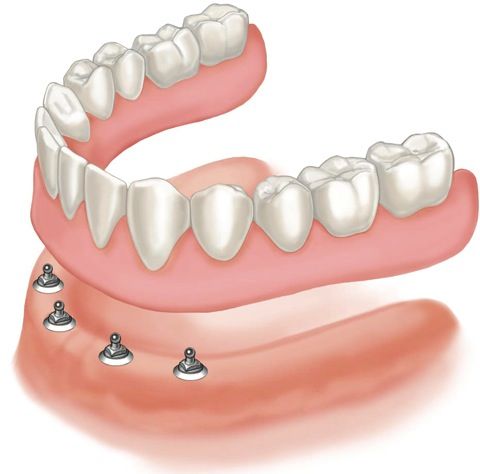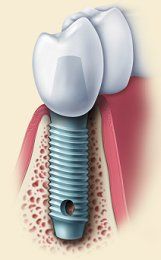Conventional Dental Implants
Dental implants are replacements for natural tooth roots; a dental implant is placed into the jawbone, later, a crown is placed over the implanted artificial root, and the dental implant will then look exactly like your natural tooth. Dental implants are frequently used as anchors for partial as well as full dental appliances and dentures. Dental implants are made of highly pure titanium, which offers the patient no allergic reaction or health hazards.
Advantages of Dental Implants:


- If a patient is looking for the most natural appearance possible, dental implant surgery and the insertion of dental implants looks incredibly natural.
- In most situations a dental implant will last longer than a natural tooth
- Dental implants are incredibly stable and are excellent for speaking, eating, and smiling.
- Dental implants are one option of tooth replacement that actually helps to preserve the jawbone health.
- Dental implants can help maintain the natural shape of a patient’s face. Facial features are either restored or remain unaltered after successful dental implant surgery.
- Dental implants feel like natural teeth.
- Chewing becomes more natural with dental implants, particularly when compared to other appliances.
Advantages of Dental Implants:
After a tooth is removed or extracted the remaining socket will heal remodeling from the inside out. The toothless space will loose height and width unless it is preserved. Socket preservation can be performed at the time of extraction thus helping to keep the space more ideal for a future dental implant. Socket preservation is done by adding an allograft material to the healing socket acting like a matrix for new bone to form.
3-Dimensional Imaging
